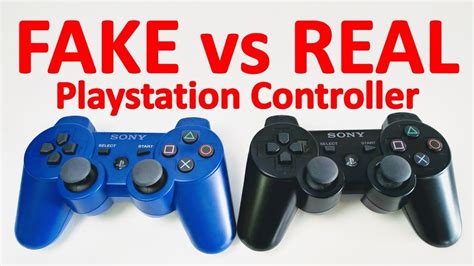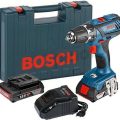Identifying Counterfeit Sony PlayStation Controllers
Sony PlayStation controllers are a popular choice for gamers worldwide, but with the increasing demand for these controllers, counterfeit manufacturers have emerged, flooding the market with fake controllers that are often indistinguishable from the real deal. Identifying a counterfeit PlayStation controller can be tricky, but with a little knowledge and observation, you can avoid getting ripped off.
In this comprehensive guide, we’ll explore the common signs of counterfeit Sony PlayStation controllers and provide you with the tools you need to make informed decisions when purchasing one. We’ll cover everything from identifying counterfeit features to finding legitimate retailers and ensuring you get a genuine controller that delivers the superior gaming experience you deserve.
How Can I Tell if My PlayStation Controller is Fake?
Identifying a counterfeit PlayStation controller requires careful observation and attention to detail. While counterfeiters strive to create convincing replicas, there are several telltale signs that can help you distinguish a genuine controller from a fake one.
Here are some of the most common indicators of a counterfeit PlayStation controller:
- Packaging: The packaging of a counterfeit controller often has poor printing quality, misspellings, or incorrect logos. Look for signs of inconsistencies in the font, color, or layout compared to genuine packaging.
- Build Quality: Counterfeit controllers often have a cheap, flimsy feel. The plastic may feel brittle, the buttons may have a mushy response, and the overall construction may appear sloppy. A genuine PlayStation controller has a sturdy build with smooth, seamless transitions between parts.
- Connections: Counterfeit controllers may have poorly fitted or misaligned connectors. Examine the USB-C port, headphone jack, and charging port for any loose or misaligned components.
- Weight: Counterfeit controllers often feel lighter than genuine controllers due to the use of cheaper materials. Hold the controller and compare its weight to a known genuine controller if possible.
- Accessories: Counterfeit controllers may lack certain accessories or include counterfeit versions of accessories like USB cables or charging docks.
- Price: If a controller is significantly cheaper than the usual retail price, it’s a red flag that it may be counterfeit. Be wary of deals that seem too good to be true.
Remember that counterfeiters are constantly improving their techniques, making it more difficult to spot fakes. If you suspect a controller is counterfeit, it’s best to err on the side of caution and avoid purchasing it.
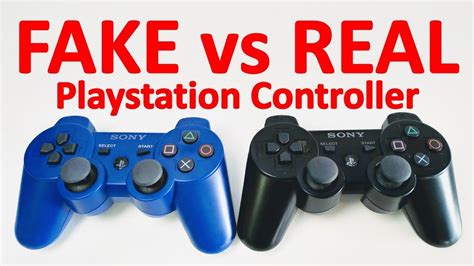
What Are the Differences Between a Real and Fake DualSense Controller?
The DualSense controller, released alongside the PlayStation 5, is a popular target for counterfeiters due to its advanced features and high demand. Here’s a breakdown of the key differences between a genuine and fake DualSense controller:
- Haptic Feedback: One of the most notable features of the DualSense controller is its haptic feedback, which provides realistic tactile sensations during gameplay. Counterfeit controllers often lack this feature or have a significantly weaker haptic feedback experience.
- Adaptive Triggers: Adaptive triggers provide resistance levels that change dynamically based on the in-game action. Counterfeit controllers may have non-functional adaptive triggers or offer a limited and unrealistic response.
- Light Bar: The light bar on the DualSense controller is used to indicate the player’s status and can be customized. Counterfeit controllers may have a non-functional light bar or an incorrect color.
- Microphone: The DualSense controller features a built-in microphone for voice chat. Counterfeit controllers may have a non-functional microphone or a microphone with poor audio quality.
- Overall Feel: A genuine DualSense controller has a premium feel with smooth surfaces and a well-designed layout. Counterfeit controllers may feel cheap and flimsy with rough edges or misaligned buttons.
When purchasing a DualSense controller, it’s essential to be aware of these differences and look for any signs of compromise in the features or build quality. Consider carefully before making a purchase to avoid a frustrating experience with a counterfeit controller.
What Are the Features of a Fake PlayStation Controller?
Counterfeit controllers often mimic the design and features of genuine controllers but fall short in terms of quality and performance. Here are some common features you might find on a fake PlayStation controller:
- Poor Button Response: Buttons on counterfeit controllers may have a mushy, unresponsive feel or require excessive force to press. This can lead to inaccurate input and frustration during gameplay.
- Unresponsive Analog Sticks: Analog sticks on counterfeit controllers may drift, have a limited range of motion, or provide inaccurate input. This can significantly hinder your gameplay experience.
- Flickering or Non-Functional LEDs: Counterfeit controllers may have flickering or non-functional LEDs, affecting the visual feedback and aesthetics of the controller.
- Short Battery Life: Counterfeit controllers often have a shorter battery life than genuine controllers due to inferior batteries or faulty circuitry. This can lead to frequent charging and interrupted gameplay.
- Cracked or Flimsy Plastic: The plastic used in counterfeit controllers is often inferior to genuine plastic, leading to cracks, scratches, or a flimsy feel.
- Loose Connectors: Counterfeit controllers may have loose or misaligned connectors, resulting in unstable connections, intermittent disconnections, or data transfer issues.
- Missing Features: Counterfeit controllers may lack certain features found on genuine controllers, such as motion sensors, vibration feedback, or the PlayStation button.
These features are indicators of a potential counterfeit controller. It’s crucial to carefully inspect the controller before purchasing to ensure you are getting a genuine product.
How Can I Verify if a Sony PlayStation Controller is Authentic?
While examining the controller for potential flaws is essential, it’s also crucial to verify its authenticity through other means. Here are some ways you can check if your controller is genuine:
- Check the Serial Number: Every Sony PlayStation controller comes with a unique serial number. You can verify the authenticity of your controller by comparing the serial number on the controller with the one on the packaging or on Sony’s website.
- Look for a Sony Logo: All genuine PlayStation controllers feature a prominent Sony logo on the controller itself. Ensure the logo is clear, sharp, and correctly placed.
- Search for Official Retailer Information: Look for any retailer information on the packaging or the controller itself. This information should match a legitimate retailer’s website or physical store.
- Check the Controller’s Firmware Version: Genuine PlayStation controllers have firmware versions that are regularly updated by Sony. You can check the firmware version by connecting the controller to your console and accessing the system settings.
- Use a Counterfeit Detector App: Several mobile apps are available that can help you identify counterfeit products, including PlayStation controllers. These apps typically use image recognition technology to scan the controller and determine its authenticity.
By implementing these steps, you can significantly increase your chances of identifying a counterfeit PlayStation controller and protecting yourself from being cheated.
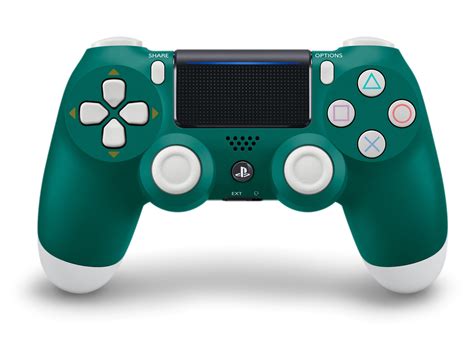
Is it Safe to Use a Counterfeit PlayStation Controller?
Using a counterfeit PlayStation controller can pose several risks to your gaming experience, your console, and even your personal information.
- Performance Issues: Counterfeit controllers often exhibit poor performance, leading to inaccurate input, lag, and other gameplay issues. This can make your gaming experience frustrating and negatively impact your performance.
- Console Damage: Counterfeit controllers may have faulty wiring or circuitry that can damage your PlayStation console. This can lead to costly repairs or replacements.
- Security Risks: Counterfeit controllers can be used to steal your personal information or compromise your online accounts. This is because they may contain malware or other malicious software that can access your console’s network connection.
- Lack of Support: Counterfeit controllers do not have any warranty or support from Sony. If the controller malfunctions or breaks, you will be left with no recourse.
Therefore, it’s highly recommended to purchase genuine PlayStation controllers to ensure a safe and enjoyable gaming experience. Choosing genuine products eliminates the risks associated with counterfeit controllers and provides you with the confidence to enjoy your favorite games without worry.
Where Can I Buy a Genuine PlayStation Controller?
To avoid purchasing a counterfeit controller, it’s crucial to buy from reputable sources. Here are some reliable places where you can find genuine PlayStation controllers:
- Sony’s Official Website: The safest option is to purchase directly from Sony’s official website. This ensures you are getting an authentic product.
- Authorized Retailers: Look for authorized retailers of Sony products, such as Best Buy, GameStop, Walmart, and Amazon. These retailers are vetted by Sony and are more likely to sell genuine products.
- Trusted Online Marketplaces: Consider shopping on reputable online marketplaces like eBay or Amazon, but be sure to check the seller’s reviews and ratings to ensure they are trustworthy.
When purchasing a PlayStation controller, be cautious of sellers who offer suspiciously low prices or have a limited track record. Always check the product description, reviews, and seller’s reputation before making a purchase.
What Happens If I Buy a Counterfeit PlayStation Controller?
If you suspect you’ve purchased a counterfeit PlayStation controller, there are a few things you can do:
- Contact the Seller: Contact the seller and inform them of your suspicions. They may offer a refund or exchange if they are a reputable seller.
- Report the Seller: If the seller refuses to cooperate or you believe the product is counterfeit, report the seller to the platform where you purchased the controller (e.g., eBay, Amazon). These platforms have mechanisms to deal with counterfeit sellers and may take action against them.
- Contact Sony: You can also contact Sony directly to report the counterfeit product. While Sony may not be able to provide a refund or exchange, they can use this information to help combat counterfeit products.
By taking action against counterfeit sellers, you can help reduce the availability of fake products and protect other gamers from falling victim to scams.
How Can I Prevent Buying a Counterfeit PlayStation Controller?
To prevent buying a counterfeit PlayStation controller, follow these best practices:
- Do Your Research: Before making a purchase, research the price of a genuine PlayStation controller and compare it to the price offered by the seller. Be wary of deals that seem too good to be true.
- Read Reviews: Check the reviews of the seller and the product on the platform where you are buying it. This can help you identify any potential issues with the seller or the product.
- Look for Official Certification: Look for any official certification or seals of approval from Sony on the packaging or the controller itself. These seals can help confirm that the product is genuine.
- Shop From Reputable Sources: Always shop from reputable retailers or online marketplaces that are known for selling genuine products.
By following these tips, you can greatly reduce your chances of buying a counterfeit PlayStation controller and ensure a genuine, enjoyable gaming experience.
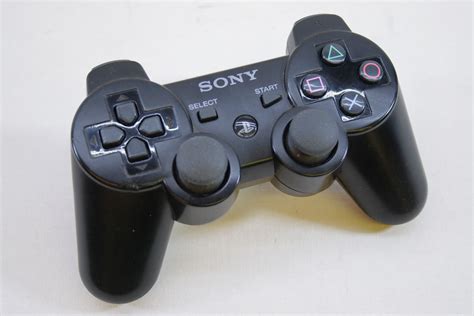
Table Summarizing Identifying Counterfeit PlayStation Controllers
| Feature | Genuine Controller | Counterfeit Controller |
|---|---|---|
| Packaging | High-quality printing, accurate logos, consistent font and layout | Poor printing quality, misspellings, incorrect logos, inconsistencies in font, color, or layout |
| Build Quality | Sturdy, well-constructed, smooth transitions between parts | Cheap, flimsy feel, brittle plastic, mushy buttons, sloppy construction |
| Connections | Well-fitted, aligned connectors, secure USB-C port, headphone jack, and charging port | Poorly fitted, misaligned connectors, loose or misaligned components |
| Weight | Feels heavier than a counterfeit due to use of higher quality materials | Feels lighter than a genuine controller due to use of cheaper materials |
| Accessories | Includes all authentic accessories | May lack certain accessories or include counterfeit versions of accessories |
| Price | In line with usual retail price | Significantly cheaper than the usual retail price |
| Haptic Feedback | Provides realistic tactile sensations during gameplay | Lacking or significantly weaker haptic feedback |
| Adaptive Triggers | Provide realistic resistance levels that change dynamically based on the in-game action | Non-functional or offer a limited and unrealistic response |
| Light Bar | Functional light bar with accurate color and customization options | Non-functional or inaccurate color |
| Microphone | Functional microphone with clear audio quality | Non-functional or poor audio quality |
| Overall Feel | Premium feel with smooth surfaces and a well-designed layout | Cheap and flimsy feel with rough edges or misaligned buttons |
FAQ
Below are some frequently asked questions about identifying counterfeit Sony PlayStation controllers:
What is the Best Way to Tell if a PlayStation Controller is Fake?
The best way to tell if a PlayStation controller is fake is to examine it carefully for any signs of poor quality or inconsistencies. This includes checking the packaging, build quality, connections, weight, accessories, and price. You should also verify the authenticity of the controller by checking its serial number, looking for the Sony logo, and searching for official retailer information. Finally, using a counterfeit detector app can provide an additional layer of verification.
Where Can I Find a Genuine PlayStation Controller?
To find a genuine PlayStation controller, it’s recommended to buy from reputable sources such as Sony’s official website, authorized retailers, or trusted online marketplaces. Be cautious of sellers offering suspiciously low prices or having a limited track record. Always check the product description, reviews, and seller’s reputation before making a purchase.
What Should I Do If I Suspect I Bought a Fake PlayStation Controller?
If you suspect you’ve purchased a counterfeit PlayStation controller, you should contact the seller and inform them of your suspicions. They may offer a refund or exchange. If the seller refuses to cooperate or you believe the product is counterfeit, report the seller to the platform where you purchased the controller. You can also contact Sony directly to report the counterfeit product.
What are the Risks of Using a Counterfeit PlayStation Controller?
Using a counterfeit PlayStation controller can pose several risks, including performance issues, console damage, security risks, and a lack of support. Counterfeit controllers can be poorly made, have faulty wiring, or contain malware, all of which can harm your console and put your personal information at risk.
How Can I Protect Myself From Buying a Counterfeit PlayStation Controller?
To protect yourself from buying a counterfeit PlayStation controller, you should do your research, read reviews, look for official certification, and shop from reputable sources. Always be cautious of sellers offering suspiciously low prices or having a limited track record. By taking these precautions, you can greatly reduce your chances of buying a fake controller.
Is it Legal to Sell Counterfeit PlayStation Controllers?
Selling counterfeit PlayStation controllers is illegal. Counterfeiting is a form of intellectual property theft, and it’s punishable by law. If you are caught selling counterfeit products, you could face serious legal consequences.
What are Some Signs of a Counterfeit PlayStation Controller?
Some signs of a counterfeit PlayStation controller include poor packaging quality, a cheap feel, loose or misaligned connections, a lighter weight than a genuine controller, missing accessories, a suspiciously low price, and lack of haptic feedback or adaptive triggers. Counterfeit controllers may also have non-functional LEDs, short battery life, and poor button response.

